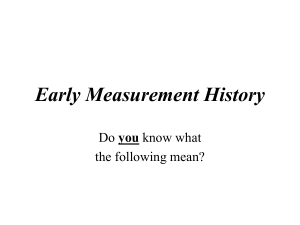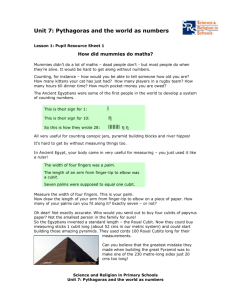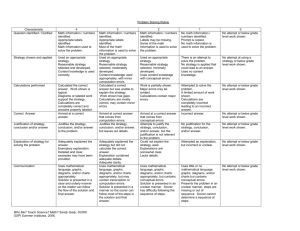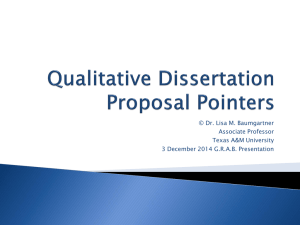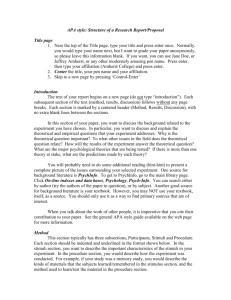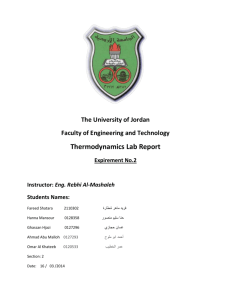General Physics Measurement and Error Fall
advertisement
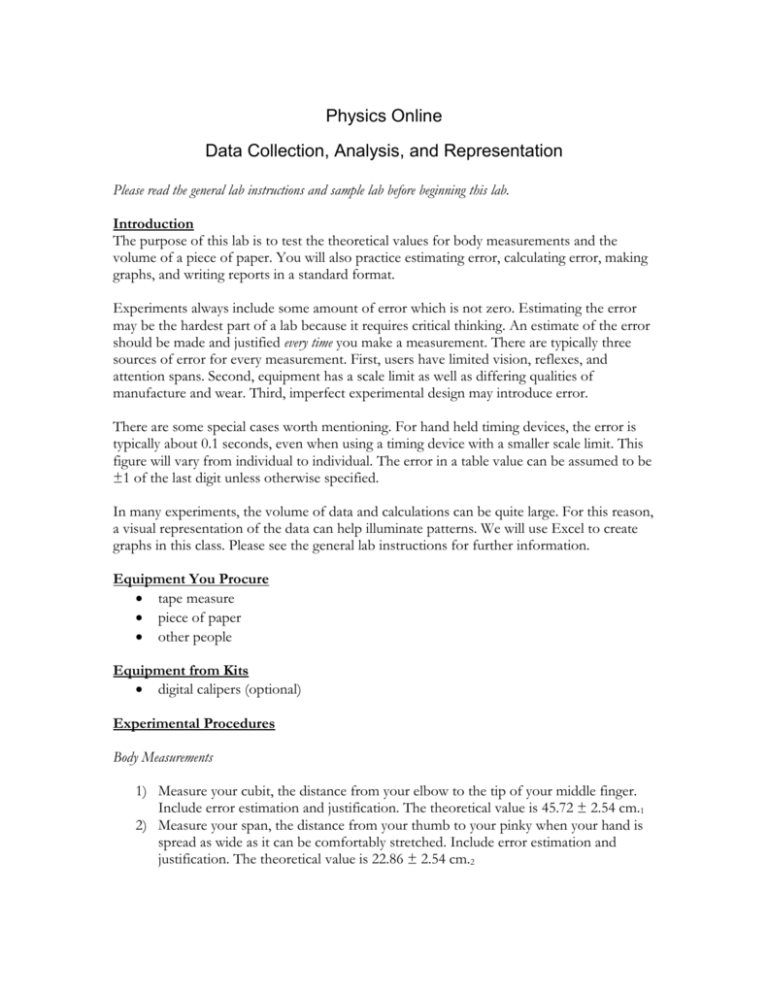
Physics Online Data Collection, Analysis, and Representation Please read the general lab instructions and sample lab before beginning this lab. Introduction The purpose of this lab is to test the theoretical values for body measurements and the volume of a piece of paper. You will also practice estimating error, calculating error, making graphs, and writing reports in a standard format. Experiments always include some amount of error which is not zero. Estimating the error may be the hardest part of a lab because it requires critical thinking. An estimate of the error should be made and justified every time you make a measurement. There are typically three sources of error for every measurement. First, users have limited vision, reflexes, and attention spans. Second, equipment has a scale limit as well as differing qualities of manufacture and wear. Third, imperfect experimental design may introduce error. There are some special cases worth mentioning. For hand held timing devices, the error is typically about 0.1 seconds, even when using a timing device with a smaller scale limit. This figure will vary from individual to individual. The error in a table value can be assumed to be ±1 of the last digit unless otherwise specified. In many experiments, the volume of data and calculations can be quite large. For this reason, a visual representation of the data can help illuminate patterns. We will use Excel to create graphs in this class. Please see the general lab instructions for further information. Equipment You Procure tape measure piece of paper other people Equipment from Kits digital calipers (optional) Experimental Procedures Body Measurements 1) Measure your cubit, the distance from your elbow to the tip of your middle finger. Include error estimation and justification. The theoretical value is 45.72 ± 2.54 cm.1 2) Measure your span, the distance from your thumb to your pinky when your hand is spread as wide as it can be comfortably stretched. Include error estimation and justification. The theoretical value is 22.86 ± 2.54 cm.2 3) Gather data for steps 1 and 2 from several other people and post your results (including errors) to the discussion board. You may also use results reported by other students. Obtain a total of at least 10 measurements of cubit and span. 4) Consult the general lab instructions regarding graph formats. Graph the experimental and theoretical span as a function of cubit on a single graph. Put span on one axis and cubit on the other. Do not make two graphs or you will lose points. Do a significant fraction of the experimental values overlap the theoretical values? Note that there are no calculations or error propagations for this portion of the lab. Volume of a Sheet of Paper Develop and implement a procedure to calculate the volume of a sheet of paper. Specify your procedure in the raw data section of your report. Include an error estimation and justification in the raw data. Include error propagation in your calculations. Compare to the theoretical value of 6 ± 1 cm3. Note that you do not need a graph for this portion of the lab. Write your report as specified in the general lab instructions and demonstrated in the sample lab. You should have a single combined section of raw data for both experiments and a single combined section of calculations and graphs. 1 http://en.wikipedia.org/wiki/Anthropic_units, last accessed 7 January, 2009. 2 IBID.

